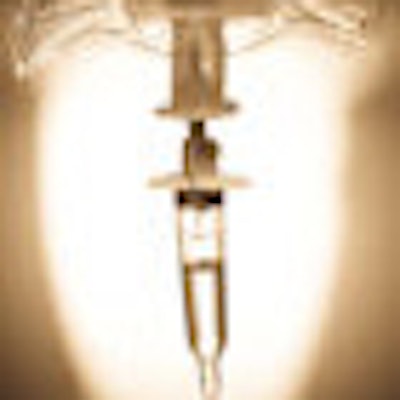
A new study comparing the effectiveness of propofol-remifentanil and propofol-ketamine combinations for the removal of all four third molars found that the latter is a less-than-perfect alternative to the former, primarily due to recovery times (Anesthesia Progress, Fall 2012, Vol. 59:3, pp. 107-117).
The prospective, randomized, double-blinded controlled study was performed by researchers from Indiana University (IU); University of California, Los Angeles; and Ohio State University (OSU).
"The biggest difference that we found was that the group that received ketamine and propofol as an infusion took basically twice as long to emerge from anesthesia," Kyle Kramer, DDS, a visiting professor at the department of oral surgery and hospital dentistry at IU's School of Dentistry, said in an interview with DrBicuspid.com. "And it took patients twice as long to recover fully and meet discharge criteria."
“It took patients twice as long to recover fully and meet discharge criteria.”
Recovery time was the primary difference noted in the measured outcomes tracked by the researchers. Other measured outcomes included various sedation parameters, hemodynamic and respiratory stability, patient and surgeon satisfaction, postoperative course, and associated drug costs.
"What we found is that the operating conditions were pretty similar," Dr. Kramer said. "There weren't a lot of differences interoperatively."
'Remarkable stability'
The study's 37 participants were men and nonpregnant women between the ages of 18 and 40 who were active patients in the department of oral and maxillofacial surgery at OSU's College of Dentistry. Due to the possible psychotomimetic effects of ketamine, patients with a history of psychiatric or psychological conditions were excluded. Prior to receiving one of the two sedative combinations, each patient was given midazolam (0.03 mg/kg) to achieve baseline sedation.
Those that received propofol-remifentanil in ratios of 20 mg of propofol to 5 µg of remifentanil per milliliter served as the control group. The experimental group was given a combination of propofol-ketamine in a ratio of 10 mg of propofol to 2.5 mg of ketamine per milliliter; both were given at an initial propofol infusion rate of 100 µg/kg/minute.
After the extractions were performed and the infusions terminated, clinicians tried to revive patients by gently shaking their shoulder and asking the patients to open their eyes every minute until there was a response. This determined the emergence time. Recovery time was qualified by the patients' ability to complete the same Trieger connect-the-dots test and 30-second one-leg standing test they completed prior to the surgery.
Surgeons were asked to rate their satisfaction immediately after the surgery, while patients were contacted by phone the following day. The patients were also asked about postoperative nausea and vomiting (PONV) during the call.
The researchers found no statistical difference in the mean infusion times or rates.
"Both groups demonstrated similar sedation parameters and hemodynamic and respiratory stability," they wrote.
Drug shortages and recalls
However, the ketamine group had prolonged emergence (13.6 ± 6.6 versus 7.1 ± 3.7 minus, p = 0.0009) and recovery (42.9 ± 18.7 versus 24.7 ± 7.6 minutes, p = 0.0004) times.
The researchers found no statistical differences in patient or surgeon satisfaction, postoperative oral analgesic requirements, or PONV between the two groups. They also found "remarkable hemodynamic and respiratory stability" for both groups.
Kenneth K. Lee, DDS, a Los Angeles practitioner who has written about propofol, agreed with the study findings and highlighted aspects of it that are relevant to the typical practitioner.
"The conclusions are valid; ketamine is a longer-acting drug, hence you will get longer recovery time," Dr. Lee stated in an email to DrBicuspid.com. "For a busy office, this fact alone would probably preclude its use."
However, forces outside dentists' control may lead to them to consider using a propofol-ketamine combination.
"In these days of drug shortages and recalls, it is prudent for practitioners to have a variety of techniques in their armamentarium," Dr. Lee explained. "Both techniques are good ones but are only viable for those that carry a general anesthesia permit or who have completed an oral and maxillofacial surgery or dental anesthesiology residency."
Given the environment of cost-conscious healthcare, the relatively high cost of remifentanil compared with that of ketamine may favor the use of ketamine as a more cost-effective anesthetic alternative to remifentanil while still allowing for good sedation quality and recovery parameters, the researchers noted.



















